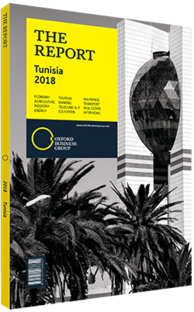Proceeding with caution: As retail lending expands, banks aim to limit their exposure to credit risk
Since 2010 retail lending has been growing faster than total lending in Tunisia, indicating a change in consumption patterns within the population despite a broader context of slow economic growth. In addition, banks – which continue to dominate the financial system and lending to the economy – have been adjusting their credit risk-control measures in recent years, following the leadership of the Banque Centrale de Tunisie (BCT). On the back of these changes, though, many individuals and small and medium-sized enterprises (SMEs) are left with only limited access to credit, making the development of alternative sources of financing all the more necessary.
SHIFTING PATTERNS: Retail lending in Tunisia nearly doubled between 2010 and 2016, the latest year for which information was available at the time of press, from TD10.7bn (€4.1bn) to TD20.5bn (€7.9bn). Retail accounted for 28.4% of total lending as of end-2016, compared to 24.8% in 2010, with credit to businesses comprising the remainder. “Several factors explain the growth in retail lending, including the evolution of banks’ information systems, which today allow for the development of the retail segment,” Salem Bessaoud, director of Valoris Consulting, told OBG. Seeing as retail lending also generally offers lower risk and higher profits than corporate lending, banks have increased their focus on the segment in recent years to support their operations.
The population has been changing its behaviour as well. Mortgage and home-improvement loans were not only the largest categories of retail lending in 2016, but also the fastest growing – at over 10%. Consumer credits, however, grew by 4.3% in 2016, compared to 4.7% in 2015. The BCT said this slower growth was due to its efforts to rationalise such loans, along with increasingly cautious lending by major banks in the face of rising household debt.
CREDIT RISKS: Despite evolving consumption patterns, several factors are limiting bank lending to both the retail and SME segments, including an interest cap mechanism that prevents banks from accurately pricing the risk of individual and SME loans. This leads to requests for more collateral than is perhaps necessary to adequately cover risk.
In general, the BCT is implementing tighter prudential norms, with a view to achieving full compliance with Basel III requirements by 2020. The BCT circular 2014-14 expects banks to raise their liquidity coverage ratio from 60% of the next month’s expected net cash outflows in 2015 to 100% by 2019. The BCT has also issued circulars regulating consumer credit, imposing higher provisions on banks for such loans.
FINANCING THE ECONOMY: The BCT and the banking sector as a whole have been working to improve risk selection, as exemplified by the implementation of an internal counterparties rating system within each bank since the end of 2017. In practice, however, this means segments such as individuals and SMEs continue to suffer from a lack of access to financing due to high collateralisation requirements and other restricting measures. “Commercial banks in Tunisia do not have the tradition of financing SMEs, and the current interest rate and margin to be made is unfavourable for banks to take on the risk,” Ahmed Rjiba, CEO of Banque de l’Habitat, told OBG.
Regulatory changes such as a new legal framework for Islamic finance, instituted by the 2016 Banking Law, are likely to include more of the populace. Both the microfinance and Islamic finance segments experienced strong growth in recent years, while Tunisia’s relatively low bank account penetration ratio – 27% of the adult population said they did not own a bank account in 2015, according to a study from the World Bank and a local think tank – illustrates the potential for further expansion. “More inclusive sources of financing will be necessary to support economic growth and the inclusion of all Tunisians into the financial system,” Sehl Zargouni, CEO of Microcred, told OBG.
You have reached the limit of premium articles you can view for free.
Choose from the options below to purchase print or digital editions of our Reports. You can also purchase a website subscription giving you unlimited access to all of our Reports online for 12 months.
If you have already purchased this Report or have a website subscription, please login to continue.

